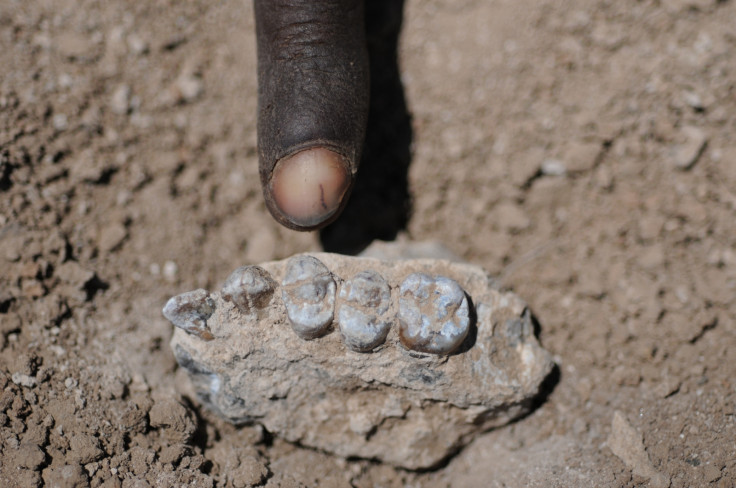Australopithecus deyiremeda: New hominin species discovered lived alongside Lucy

A new species of hominin that was closely related to the famous "Lucy" species Australopithecus afarensis has been discovered.
Scientists from the Cleveland Museum of Natural History found the upper and lower jaw fossil in the Woranso-Mille area of the Afar region of Ethiopia and have concluded it is a new species – named Australopithecus deyiremeda.
Au. deyiremeda would have lived alongside Lucy, whose species lived between 2.9 and 3.8 million years ago. Its name means "close relative" in the language spoken by Ethopia's Afar people.
It differs from Lucy in terms of the size and shape of its thick enamelled teeth and the architecture of its lower jaw. The teeth also suggest the new species had a different diet to Lucy.
Publishing their findings in the journal Nature, the authors wrote: "The new remains described here show clear similarities with Australopithecus and lack the diagnostic features of Ardipithecus, Paranthropus, Kenyanthropus and Homo. Various aspects of dentognathic morphology distinguish these specimens from the contemporaneous Au. afarensis and warrant their assignment to a new species."

Yohannes Haile-Selassie, lead author of the study, said: "The new species is yet another confirmation that Lucy's species, Australopithecus afarensis, was not the only potential human ancestor species that roamed in what is now the Afar region of Ethiopia during the middle Pliocene.
"Current fossil evidence from the Woranso-Mille study area clearly shows that there were at least two, if not three, early human species living at the same time and in close geographic proximity."
There is a long-standing argument regarding how many hominin species there were living at any given time between three and four million years ago. Previously, some scientists believed there was just one, but the discovery of a foot bone that clearly did not belong to Lucy's species showed this could not have been the case.
The discovery of Australopithecus bahrelghazali from Chad and Kenyanthropus platyops from Kenya also challenged this idea – but there is more scepticism over the latest species to be found.
Haile-Selassie said: "This new species from Ethiopia takes the ongoing debate on early hominin diversity to another level. Some of our colleagues are going to be sceptical about this new species, which is not unusual.
"However, I think it is time that we look into the earlier phases of our evolution with an open mind and carefully examine the currently available fossil evidence, rather than immediately dismissing the fossils that do not fit our long-held hypotheses."
Researchers say the discovery has important implications for our understanding of early hominin ecology and raises major questions about just how many early hominins there were living at the same time.
However, in an accompanying news and views article, Fred Spoor from University College London, argues that it is important to find further evidence supporting the claims. He said that whether the retention of the specific morphology found in A. deyiremeda "does indeed warrant species-level distinction" should be confirmed with further study and more fossils.
Speaking to IBTimes UK, he added: "What I would warn against is interpreting every difference as a new species.
"On the basis of what they present I'm happy to buy it initially, but I will only really believe it when I see the fossils myself.
"Occasionally you get something so different that you see a picture and you know it's something no one has seen before. This distinction is much more subtle."
© Copyright IBTimes 2024. All rights reserved.






